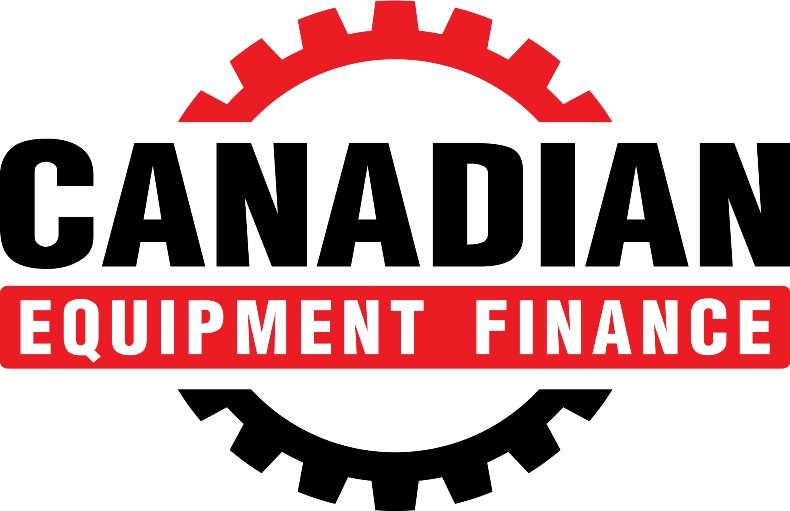 By Patricia Voorhees
By Patricia Voorhees
Corporate sustainability is broadly defined as how an entity has a positive impact on the environment and society in which it operates.
In an era of climate change and changing investor expectations, corporations are concerned with sustainability and assess their impact through environmental, social and governance (ESG) reports communicating progress in each of these critical areas.
Corporate sustainability and associated ESG related risks are beginning to be considered by rating agencies when assessing corporate risk. What’s more, new generations of investors are demanding that their investment dollars are in companies and funds considered to be socially responsible investments (SRIs). The quest for corporate sustainability has become a national and international imperative, as well, with initiatives underway that are of interest to the equipment finance industry.
Sustainability actions
The United Nations Global Compact — the largest corporate sustainability initiative in the world — has established 17 sustainable development goals (SDGs) for 2030.
A few of them speak specifically to matters relevant to industrial equipment. Goal 9 is to build resilient infrastructure, promote inclusive and sustainable industrialization and foster innovation. Goal 11 is to make cities and human settlements inclusive, safe, resilient and sustainable. And Goal 12 aims to ensure sustainable consumption and production patterns.
In Canada, the federal government’s Expert Panel on Sustainable Finance has issued 15 recommendations [see box] designed to spur market activities, behaviours and structures needed to bring sustainable finance into the mainstream.
As part of that effort, the Institute for Sustainable Finance had unveiled the establishment of the Canadian Sustainable Finance Network (CSFN), which is an independent and diverse alliance of academics, researchers and educators.
“The Institute for Sustainable Finance aims to create the most credible and robust body of sustainable finance knowledge in the country. Establishing the CSFN as a critical resource for Canadian leaders is one way we can help guide the massive transition to a sustainable economy,” the announcement noted.
Sustainability and equipment finance
What exactly characterizes a sustainable equipment finance offering that might contribute to achieving the UN’s SDGs and Canada’s goals?
Certainly, a winning argument can be waged that equipment leasing and finance has, in fact, been offering sustainable solutions for decades. Concerns about asset efficiency and total cost of ownership have been at the forefront of conversations between equipment lessees and lessors across asset types. Asset valuation, end of lease refurbishment and remarketing remain the life blood of lessors, offering fair market value (FMV) lease products in order to drive returns and cascade assets for another use in the secondary market.
For an industry already steeped in asset efficiency and reuse what then might the next generation of sustainability look like?
Assets are getting smarter with embedded Internet of Things (IoT) technology, coupled with machine learning and artificial intelligence (AI), while end user demand for asset usage-based finance options and sustainable solutions continues to build. As a result, new models are emerging across industries that leverage these smarter assets and deliver usage-based offerings promoting sustainability.
Improved utilization models
Someone who works in a hospital is likely familiar with the sight of unused equipment lining hallways and storage areas, such that average 30 – 40 percent utilization rates for surgical equipment comes as no surprise. Those in the construction industry know idle equipment (and their theft) at job sites is commonplace.
In both cases this underutilization may not be novel, but it is costly and detrimental to sustainable use and consumption. In response, and as examples, Cohealo in the healthcare space and EquipmentShare in construction are among companies delivering solutions for asset underutilization. Each leverage technology for usage-based asset sharing.
EquipmentShare empowers construction equipment owners to efficiently manage their equipment and/or offer it for rental during idle periods.
The company’s Track platform technology connects every piece of equipment on the job site, regardless of the original equipment manufacturer. Tracking and monitoring elements note where equipment is, their utilization and they perform diagnostics for maintenance or repair. Track also promises to combat theft and unauthorized use of equipment through geofencing features that disable equipment and send alerts when equipment leaves its designated site.
Cohealo saves health systems money by sharing equipment between facilities, increasing equipment availability, eliminating rentals and reducing capital expenses.
Health systems typically purchase or finance surgical equipment that is dedicated to an operating room suite or floor. Often smaller hospitals or hospital groups delay the purchase of the latest technology, such as a surgical robot, because it is simply too expensive (even if financed), for their capital budgets. One facility might request a laser while one lies idle at another. Cohealo’s solution tracks where equipment is, its utilization, and provides scheduling and logistics to support intra-health system sharing.
Cohealo CEO Dr. Todd Rothenhaus noted, “We are helping clients including DHL in the U.K., Thomas Health Systems and Kaiser Permanente increase equipment utilization and drive significant cost savings.”
Subscription-based models
There are many names for subscription based “as a service” models used for finance products across industries and equipment types. A couple of examples of offerings deemed equipment subscriptions are Sparkfund in the energy space and LiftForward in technology.
Sparkfund offers energy subscriptions for a fixed monthly amount with a functional guarantee at predetermined power or service levels, covering systems such as lighting, heating/ventilation/air conditioning (HVAC), monitors and controls, electric vehicles and charging and energy storage. Its technology platform monitors equipment operations to reduce energy costs and carbon emissions. The company has over 500 installations and claims 469,204,503 total lbs. of CO2e (carbon dioxide equivalent) reduction and over $70 million in energy savings.
LiftForward is working to reimagine ownership by offering technology subscriptions with partners such Intel and Microsoft. Surface All Access is a fixed monthly subscription including hardware and software service. After two years customers are refreshed with the newest technology.
LiftForward actively supports circular economy equipment reuse. CEO Jeffrey Rogers explained that “after secure data wipes, returned devices are repurposed for use in under-served, tech-challenged schools.”
Building momentum for solutions
Equipment finance is in a unique position as we move to the future of sustainability because of our history of focusing on equipment efficiency. As user demand for sustainable solutions increases alongside the pace of technology, more solutions and scale are sure to come.
The question will be how to both measure and improve the true impact these solutions have toward achieving international and Canadian sustainable finance goals.
Patricia Voorhees is a director of The Alta Group in the strategy & competitive alignment and merger and acquisition advisory practices.
Expert Panel sustainability recommendations
In April 2018 the federal government announced the creation of the Expert Panel on Sustainable Finance, charged with developing a set of recommendations to scale and align sustainable finance with Canada’s climate and economic goals.
After extensive consultations the Expert Panel sent an interim report to the federal government in October 2018, which accepted the panel’s final report in June 2019.
There are 15 recommendations in the final report, grouped into three mutually reinforcing pillars, as outlined in its executive summary.
Pillar I: The Opportunity
Canada should put forward a renewed long-term vision for its transition, with focused policies to help businesses and investors of all sizes effectively respond to the economic opportunity. Mapping Canada’s climate goals into clear industry competitiveness visions and capital plans would spell out the size and horizon of the investment opportunity. Meanwhile, an incentive for Canadians to make climate-smart investments would drive demand for financial products and services that promote sustainable outcomes.
Recommendation 1: Map Canada’s long-term path to a low-emissions, climate-smart economy, sector by sector, with an associated capital plan.
Recommendation 2: Provide Canadians the opportunity and incentive to connect their savings to climate objectives.
Recommendation 3: Establish a standing Canadian Sustainable Finance Action Council (SFAC), with a cross-departmental secretariat, to advise and assist the federal government in implementing the Panel’s recommendations.
Pillar II: Foundations for Market Scale
Canada’s public and private sectors should invest in the essential building blocks needed to scale the Canadian market for sustainable finance to mainstream status.
These foundations include authoritative and decision-useful climate information, effective climate-related financial disclosures from businesses and investors, legal clarity around the obligations of investment fiduciaries, financial regulation that addresses climate risk and a supportive and climate-informed ecosystem of professional services providers.
Recommendation 4: Establish the Canadian Centre for Climate Information and Analytics (C3IA) as an authoritative source of climate information and decision analysis.
Recommendation 5: Define and pursue a Canadian approach to implementing the recommendations of the Task Force on Climate-Related Financial Disclosures (TCFD).
Recommendation 6: Clarify the scope of fiduciary duty in the context of climate change.
Recommendation 7: Promote a knowledgeable financial support ecosystem.
Recommendation 8: Embed climate-related risk into monitoring, regulation and supervision of Canada’s financial system.
Pillar III: Financial Products and Markets for Sustainable Growth
Recognizing Canada’s unique economic make-up, the Panel has identified several opportunities to develop and scale up market structures and financial products that would have particular impact in facilitating Canada’s transition and adaptation. These opportunities align closely with Canada’s PCF [Pan-Canadian Framework on Clean Growth and Climate Change] and support the financing needs of critical segments of the Canadian economy such as clean technology, oil and natural gas, infrastructure, buildings, and electricity generation and transmission.
Recommendation 9: Expand Canada’s green fixed income market and set a global standard for transition-oriented financing.
Recommendation 10: Promote sustainable investment as ‘business as usual’ within Canada’s asset management community.
Recommendation 11: Define Canada’s clean technology market advantage and financing strategy.
Recommendation 12: Support Canada’s oil and natural gas industry in building a low-emissions, globally competitive future.
Recommendation 13: Accelerate the development of a vibrant private building retrofit market.
Recommendation 14: Align Canada’s infrastructure strategy with its long-term sustainable growth objectives and leverage private capital in its delivery.
Recommendation 15: Engage institutional investors in the financing of Canada’s electricity grid of the future.
“We encourage governments at all levels, regulators, businesses and investors to consider these recommendations in charting Canada’s course toward a sustainable, prosperous, and resilient future,” concluded the report’s executive summary.




